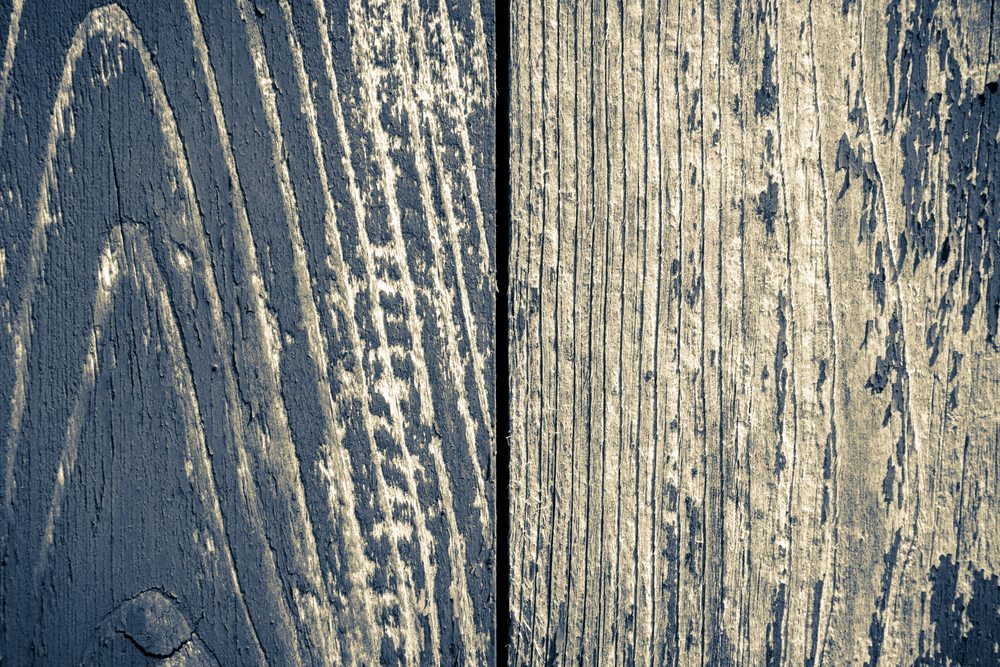I have had the privilege of investigating quite a number of deck stain failures. You may not think that this would be an enviable pastime but this experience has brought some clarity to the subject of deck stain failures that I would like to share with you.
You can appreciate that the science behind stain development and the degradation of wood by ultra-violet light and the elements is quite complex but I believe that I can explain what has gone wrong with your deck with a few simple examples.
You must first understand that wood is a natural material and any two random pieces of wood, of the same type (say smooth-sawn, knotty, flat grained, southern yellow pine), may perform completely differently when coated with the exact same wood stain. This would be due to the differences in the grain patterns of the individual samples. If the same type of wood can vary this much imagine the differences if we include other variables such as surface smoothness, knot density, grain type, moisture level, and stain thickness. All of these things will affect the lifespan of your deck stain. The March 2004 issue of the Journal of Coatings Technology (pg. 42) stated that many top-line stain systems applied to wood siding “could experience early failure depending on the grade of lumber and the extent of flat grain or other defects.” Notice they didn’t say anything about whether the wood was sanded and prepared correctly. The variability of wood is the overriding factor.
Here’s an example of how localized wood grain variability can affect performance. I hope you will accept that a paint or stain, if mixed properly prior to application, is a homogeneous material. When dry, every square inch of it should have the same physical properties such as gloss, durability and adhesion. If differences in film performance are observed then this difference must be attributable to the substrate-the wood surface. The photo to the right shows a deck stain starting to break down in specific areas on a deck board. The failure is not random but is following the growth rings of the wood. Winter wood growth is slow and these thinner bands do not absorb stain binders as well as the more porous summer growth areas. When a stain films is stressed beyond a certain limit (we’ll discuss this later) it will fail first on these winter growth rings. This is normal.
The wood integrity breaks down quickly when exposed to water and sunlight. You have probably seen old cedar fences that have turned a light gray colour and have become soft and fuzzy. The reason for this is that the organic material that holds the wood cells together has been broken down by the elements, and more specifically, by exposure to ultra-violet solar rays. The loose fibers remaining on the surface of the wood make the surface feel fuzzy.
If you applied some clear adhesive packing tape to one of these dry weathered pieces of cedar then pulled it off quickly you would undoubtedly see a layer of wood fibers adhered to the sticky side of the tape.
If you did such and experiment you would obviously think that nothing was wrong with the tape. It adhered well to the wood you applied it to and the force you used to pull the tape from the surface ripped the loose wood fibers from the bulk of the wood. You would be correct to assume that this force was responsible for the delamination of the tape from the wood.
This is exactly what has happened with your deck. This may surprise you since there is obviously no one pulling your stain off the surface of your deck with tape. There doesn’t have to be. The deck can do all the pulling by itself.
Before we get into specifics let’s think about all the possible ways a deck stain may peel from a wood surface. There are only three.
- The stain may split, with the top layer coming off and leaving a film residue on the surface. Think of this as separating a layer cake by taking off the top layer and leaving the bottom layers on the platter. This type of failure is most likely to occur with oil paints that have skinned on top.
- The stain may delaminate from the wood cleanly with no wood fiber on the back of the stain peel and no stain residue on the wood. It is most likely to occur when some contaminant like oil or BBQ grease prevented the deck stain from bonding to the wood. I don’t see the very often.
- The wood may fail directly under the deck stain. This is easy to determine by examining the stain peel under a microscope and checking for wood fiber on the bottom side of the peel. If it is coated with wood fiber the wood has failed and not the stain. The stress of expansion on the stain is ripping wood fiber from the wood. This is the most observed stain failure mechanism.
Wood expands and contracts with humidity and temperature by as much as twenty percent along some dimensions. To get a feel for this let’s do another exercise.
Imagine taking a wide elastic band and holding it loosely, without stretching it, between two fingers of either hand. The elastic represents one coat of your deck stain and the force you’re applying with your fingers, the bond strength between your stain and the wood of the deck. Now stretch the elastic about an inch to simulate the wood expanding in humid wet spring weather. Feel the strain on the elastic between your fingers? Your deck stain feels the same strain. Now imagine you applied two coats of stain instead of only one with the expectation of making it more “durable”. Double up the elastic with another one then stretch both exactly the same amount you did previously. (The wood hasn’t changed so it will expand the same amount.) You know what just happened to the strain on your fingertips? It just doubled. If you added even more elastics (more coats), or stretched it further, you can imagine that at some point you won’t be able to hold onto the elastic and it will slip through your fingers. Likewise, the stain film would rip itself from the deck.
Depending on the surface condition of your wood prior to coating, the thickness of the stain and the degree of expansion of the wood, the strain caused by expansion of the wood may exceed the strength of the bond between the wood fibers that hold the deck stain to the bulk of the wood.
I estimate that I have collected about one hundred deck peels over the last few years. By examining these peels under a microscope I’ve could determine the general mechanism of failure. Every one of these deck peels had wood fiber on the bottom side. What surprised me was the amount of wood present; the surfaces were totally covered with wood fiber. The photograph on the next page shows the top surface of a clear wood deck finish that had peeled from a deck. There are particles of dust and dirt visible on the surface as would be expected after exposure to the elements but no surface cracks or damage. You will notice that wood fibers are visible protruding out from the back side of the peel.
The photo below shows the same deck peel but flipped over to reveal the bottom surface. This surface is completely covered with wood fiber.
When we performed our thought experiment with the adhesive tape we did not attribute the removal of the soft loose fibers to some deficiency of the adhesive tape. In the same way, we should not blame the stain film for adhering better to the surface wood fiber than the surface fibers adhere to the wood below it.
One question that I’ve been asked that does warrant an answer is why deck stains fail so much faster than exterior house paints applied to vertical surfaces.
The simple answer is that horizontal deck surfaces are exposed to more UV light and ponded water. This water may be present under layers of snow and can seep deep into the wood where it can undergo numerous freeze-thaw cycles every year. Water expands when it freezes and waterlogged wood would be expected to suffer damaging mechanical stress after numerous freeze-thaw cycles. This will not happen to vertical surfaces around your home because the wood would never get that wet.
UV light can pass right through clear acrylic paint and stain films and damage the wood immediately below the film. Manufacturers add transparent pigments and UV absorbers to clear stains to block some of this damaging UV light but they don’t stop it all. To get the best UV protection you should use a solid, or opaque, stain but these unfortunately are not very popular. People want to see some of the wood grain so they choose a transparent or semi-transparent stain and assume that this decision will not impact the life of their stain. Unfortunately it does.
Exposure to excessive UV light, ponded water and numerous freeze-thaw cycles will actually break down the wood under your stain film shortening its service life by weakening the surface wood/bulk wood bond. The next time the wood expands in humid weather the film stress may exceed the threshold and rip the damaged wood fibers from the bulk of the wood.
Now that you know that it’s the expansion and contraction of the wood that exerts the stress that is ultimately responsible for the peeling of your deck stain you would be truly surprised by the number of clients that “know for sure” that the only possible reason the stain has failed is because it was seriously defective.
I routinely ask if the stain was homogeneous when stirred, if it applied well, had a uniform colour and dried as expected. I can’t remember one user claiming the product seemed out of specifications at the time of application. Paint and stain batches are tested many times during the production process so the potential of releasing a seriously bad batch is very remote.
As a manufacturer of quality coatings, we are in the unfortunate position that the ultimate performance of our product is so reliant on conditions largely beyond our control- variations of wood quality, wood moisture levels, opacity, surface preparation and exposure severity.
A painter I know had a great response to the question of why, after doing all the required surface preparations, his client’s deck stain failed after a year of exposure.
“It failed because they left it outside!”
Peter Umanec MSc
Benjamin Moore Paints





